Highland zoologist lands dream job in Amazon
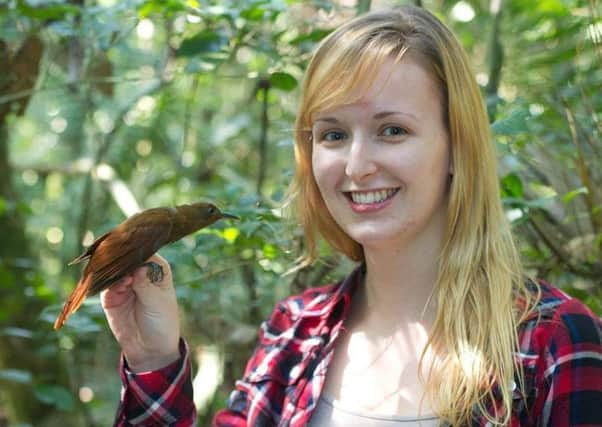

Holly O’Donnell, from Invergordon in the Highlands, has been leading a remote field station in Peru monitoring wildlife.
And the 25-year-old St Andrew’s University graduate is heading for another challenge near the famous Inca city of Machu Picchu in an effort to save a habitat from the devastation of a planned dam.
Advertisement
Hide AdAdvertisement
Hide AdHolly, who has been working as a mammal team co-ordinator with Fauna Forever, said: “I hope that my story inspires people to take an interest in conservation and the incredible wildlife in South America.
“I would encourage people to travel, to see some of the world, and to experience truly wild places and animals whilst they still exist.”
During her final semester, she fundraised a trip to Antarctica, where she took her first steps into fieldwork.
She said: “The experience that I gained in Antarctica encouraged me to apply for an internship in Paraguay.
“I had two research projects. One was focused on the reproductive behaviour of the Agile Gracile Mouse Opossum through a mark and recapture programme.
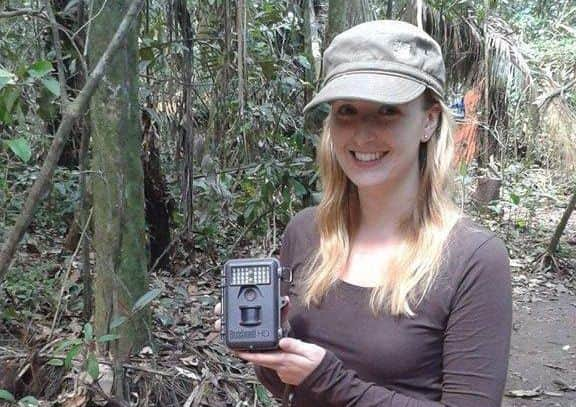

“For the other project I took advantage of an area of Cerrado (savannah) habitat that was subject to a fire in order to investigate the species diversity post-burn.
“I also used mist nets to trap bats, was trained in how to locate and observe unhabituated primates and practised VHF radio tracking of a rare bird.”
She added: “My three month internship soon turned into a seven month stay and a job as executive assistant.
Advertisement
Hide AdAdvertisement
Hide Ad“Para La Tierra was not only an incredible experience, but it provided me with invaluable skills which, after just seven weeks back in Invergordon, landed me my dream job here in the Peruvian Amazon.”
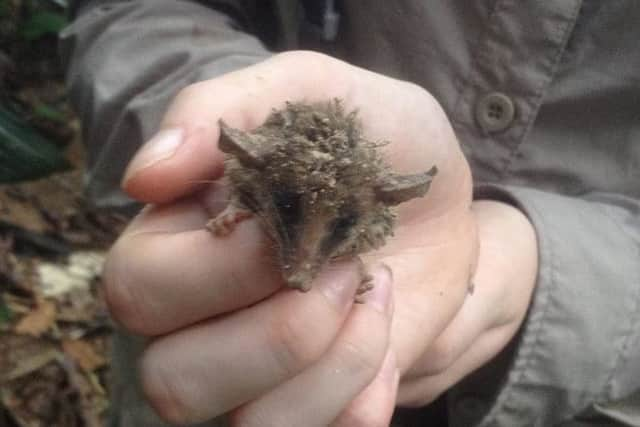

While there, Holly said: “Five people at our camp have been infected with Leishmoniasis, the flesh-eating disease, one having to return to the UK for treatment, and so I am doing my best to avoid any insect bites by wearing long sleeves, having quick showers, and using copious amounts of insect repellent.
“I was hospitalised with dysentery in May, and also suffered from the painful jungle fever Chikungunya for a week in June.”
She has spent the last few months at a remote station along the Las Piedras River, in the Madre de Dios (Mother of God) region of Peru.
Holly said: “When we arrived, there was nothing. No toilet, no shower, no buildings. We had to construct the site from scratch, in heavy rain, transporting construction materials and even bunkbeds and mattresses from the city via canoe, and then a hike through knee deep swamp.
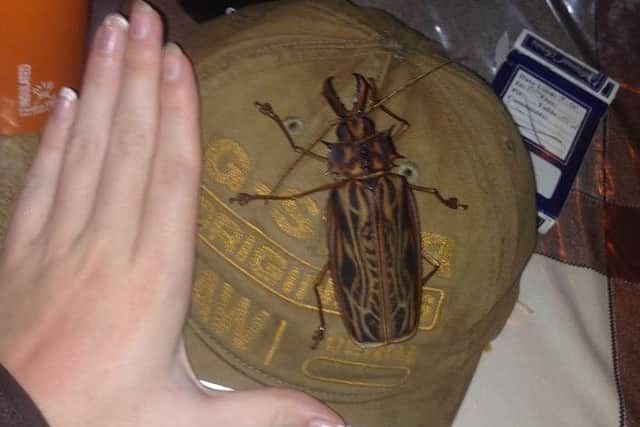

“It is still basic. I have been camping the entire time. We have a generator for electricity which is on for only a few hours in the evening.
“Our toilet and shower are completely outdoors, which takes a bit of getting used to, but showering under the stars or with Brown Capuchin Monkeys around is quite an experience.”
Holly’s job is Mammal Team Coordinator, responsible for the mammal research and data collection at each of the field sites they visit.
Advertisement
Hide AdAdvertisement
Hide AdShe said: “I lead a team of interns and volunteers, training them in field survey methods, mammal identification, camera trap use, and footprint tracking.
“I walk 4km in a line in the rainforest, at a pace of around 1km per hour, in silence, recording every mammal either spotted, heard, or which has left tracks.
“This will be done at sunrise and late afternoon, and sometimes at night. On an average day I walk anywhere between 12 and 20km.
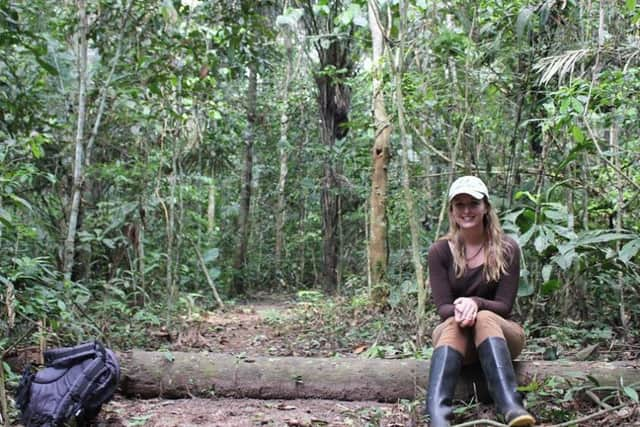

“From my walks, I can calculate species diversity, abundance and density, and this is used for Fauna Forever’s long term monitoring of the Amazon. We also look at the effect of human activities such as tourism, bush-meat hunting, brazil nut extraction and logging.”
In a few weeks she shall be moving to the Andes, just 12km from Machu Picchu, to study the wildlife of the cloud forest near Quellomayo.
She said: “We have been invited by the local Quechua-speaking and coffee growing community to compile an inventory of the species here.
“The habitat is threatened by the proposed construction of a Hydro-electric dam, and so we hope to provide some evidence for as to why the area should remain untouched.
“I currently only have eight camera traps with which to record large mammals, so I am fundraising to purchase more, in the hopes of filming species such as Paca, Puma, Peccary, Deer and Ocelot.
Advertisement
Hide AdAdvertisement
Hide Ad“In the Andes we shall have to contend with altitude sickness, and a significantly colder climate, but apparently chewing coca leaves helps with the sickness.
“Coca is grown freely and legally here, and is used to make a popular tea. It is only illegal when processed into cocaine. Peru is currently the world’s biggest exporter of coca and cocaine, and we frequently hear the “cocaine-planes” flying overhead up to Colombia.”
She said the ‘most incredible thing to have happened to me’ was a sighting of the largest predator in South America - the rare and elusive Jaguar.
She said: “Whilst clearing a new 4km trail I spotted a group of Spider Monkeys which I followed for around half an hour.
“I took a short break on a log in the sunshine. I had been sitting for only a couple of minutes, when I looked over my left shoulder to see a wall of dull moving spots, just 4m behind me.
“My heart literally stopped and thudded and everything seemed to freeze for a split second. But I remembered my training – to make yourself as big and loud as you can.
“My instinct was to stay where I was and hope that it would walk past me. The last thing that I wanted to do was to stand up and attract its attention, and possibly provoke it into an attack.
“It may have been stalking me, but it may also not have known that I was there. It was just a leap from me and jaguars kill with one bite to the head or neck. They can crush your skull.
Advertisement
Hide AdAdvertisement
Hide Ad“But I stood up, grabbed my machete and banged it on the log that I was sitting on. With a loud exhalation, the jaguar turned on its tail and vanished as silently on its feet as it had come.
“I had no voice with which to shout at it. I was shaking more than I thought was possible, and it felt like to took me forever to return to my colleagues who were around 20minutes away.
“I banged every tree as I went, and had to take care to slow myself down. Cats love to chase things that are running. It was a terrifying, but exhilarating experience and I am incredibly privileged to have seen a jaguar so close, but it is not an experience that I wish to repeat.
“They are amazing beautiful animals, so large and powerful, and I frequently find their footprints on our trails around camp, but my sighting gave me a newfound respect for the rainforest.”
Holly said she now felt ‘very small and vulnerable’ walking around.
She added: “Coming from Scotland, where we are the most dangerous animals in the woods, it is easy to forget that out here in the Amazon, I am just a visitor, and I am in their territory.
“Another special sighting was of a Bushmaster, the biggest pit viper snake, one night on my way to the bathroom. It was a good 3.5m long, thicker than my leg, and incredibly dangerous.
“One bite from a Bushmaster can kill several grown men, but luckily they are fairly docile, and this one slithered away from me.
Advertisement
Hide AdAdvertisement
Hide Ad“I alerted the herpetologist, who caught it, allowed us to take photographs, and then released it. I am not afraid of snakes but I have a healthy respect for them and it was again a reminder that, even at our camp, we are in the rainforest and must take care even when just walking to the toilet.”
She was also a mother for the day to a day old baby White-Lipped Peccary, an aggressive pig-like creature which runs in groups of up of 300, and can kill a jaguar when in a group.
Holly said: “They smell terrible, and make a loud crunching, grunting and almost barking sound, but when babies are incredibly cute. It imprinted on me and was following me around, thinking that I was its mother.
“Unfortunately, they have been heavily hunted and the baby peccary was stolen from me by the construction workers who later killedand ate it. I had planned to release it.
“The chance of it being reunited with its family was slim, but at least it would have supplied a hungry ocelot or puma with dinner. On a personal level, it was an example of how the men that I work with here do not respect me because I am a female scientist.
“Bushmeat hunting is a huge problem for conservation in Peru, particularly the hunting of primates, where the babies are often kept as pets. It is a subject of much contention between myself, volunteers and Peruvian staff, where there are often differences of opinion.
“My opinion is that, unless you are being hosted by a native or indigenous community, where hunting for subsistence is legal, then you should never consume bushmeat.
“The killing of just one Tapir can have a huge effect on the forest, and I get very angry when I see people eating it, especially conservationists and biologists, or if I catch people consuming it at camp or in our city volunteer house.
Advertisement
Hide AdAdvertisement
Hide AdHolly said she absolutely loves her job, adding: “I am very lucky to be here, to be gaining the experience that I am and to be seeing such astounding wildlife on almost a daily basis.
“The rainforest is unpredictable, rewarding and I am privileged to be living my life out here. I will miss the time when I can no longer wake up in the morning to the haunting calls of Howler Monkeys.”